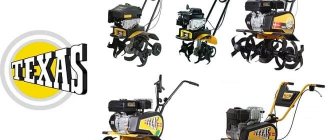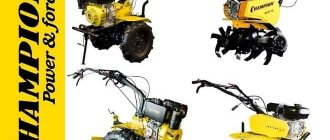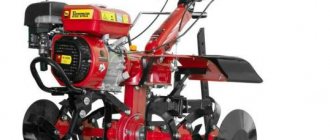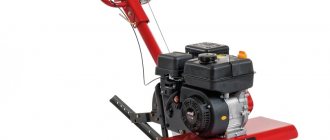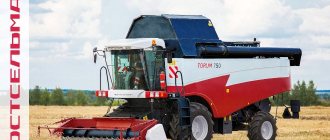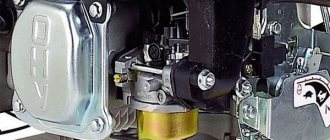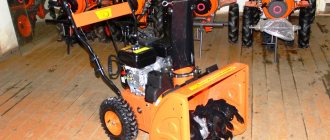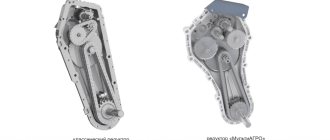Buying a cultivator greatly simplifies the process of performing various types of garden work. It's no secret that such equipment can and does break down. So that the summer resident does not have to buy a new unit, he must understand how to repair the cultivator himself. Let's discuss this issue further in this article.
Maintenance of equipment by the company
Texas cultivator repair and equipment servicing are provided by specialized centers. The operating instructions list the addresses of repair shops. The warranty on the tool is valid for 3 years, so first of all you need to determine the location of the repair center and the possibility of service. This applies to the warranty part of the tool. You can add lubricant and replace the belt on the Texas cultivator in any workshop or on your own. Failures of equipment operating in difficult conditions are classified as follows:
- engine breakdown;
- automation failure;
- failure of mechanical components.
It is these problems that will require contacting a service center.
When buying a Texas cultivator, you need to stock up on branded gearbox lubricant and drive belts. It is easy to find the specifications of the components in the included manual. The numbers and letters of the marking indicate the size and profile of the belt. The designation TEXAS A 41 1/2 13Х1050Li reads, V profile belt with a height of 8 mm and a width of the wide part of 13 mm, reinforced with cord thread, length 1050 mm. The marking is on the wide part of the ring; it is indicated in the instructions for the Texas cultivator. The manual is translated into machine language, but the technical terms are clear.
In addition, the instructions must include the rules for preparing the cultivator for work and the frequency of changing engine oil. Please note that the first crankcase oil change is carried out after 5 hours of operation. You need to use the recommended fuel for work; it differs in different models.
Spare parts for the Texas cultivator are purchased at service centers. They will be delivered even if the model has been in use for a long time and has been discontinued.
Unit warranty or do-it-yourself repairs?
The first step when a breakdown occurs is to check the warranty.
If you still have a warranty card for the product, you must contact the seller and report the breakdown.
If it meets the terms of the warranty, the systems will be repaired for free.
Cases that are not eligible for warranty service:
- The device failed after external intervention: disassembly or damage from foreign objects.
- The unit failure occurred due to improper operation.
- The cultivator frame or motor has been disassembled and the warranty sticker is missing.
If you used your motor cultivator correctly, and it suddenly breaks down, then check the warranty period.
In the case where the unit is by no means new, and the warranty period has long expired, you can repair the motor cultivators yourself, but only if the damage is minor. Replacing the engine and other main functional components is very difficult for a user without special skills. In this case, you will have to look for a service center that specializes in garden equipment.
Most minor breakdowns can be solved by replacing some parts, cleaning internal systems and replacing fluids, but professional repair of cultivators is best left to the craftsmen.
Characteristics of Texas cultivators
Manufacturers have provided for the production of equipment for various areas and processing depths.
Some models cope well with garden beds, while others can lift fallow areas with heavy soil. At the same time, the range of mounted implements used increases the sector of equipment use. If the cultivator digs into loose soil, reduce the gas, put the wheels in the middle position, and adjust the coulter.
Design features of Texas motor cultivators:
- The machine control panel is located on the steering wheel of a special design with a comfortable grip;
- lightweight rear console improves alignment and reduces weight;
- the exclusive frame made it possible to lower the center of gravity and make it easier to control the device;
- the engine is placed above the cutters, the unit has acquired stability;
- There is a front bumper to protect the engine and transport wheels.
Design changes to the Texas cultivator have added to its manufacturability. So, all devices have reverse, no effort is required to pull out a buried machine. Powerful cultivators cultivate a wide strip of dense soil to a depth of up to 30 cm. All machines have a chain drive and are equipped with reliable four-stroke engines. The disadvantage is increased noise during operation and burying the nose in soft soil.
You cannot use a cultivator when cultivating clearings after cutting down. The sabers will definitely break on the roots! The full load on the cutter can be given after running-in.
Device
The Texas cultivator device includes several main working units. The design uses a 4-stroke gasoline engine with varying power, depending on the series and model of the unit. In fact, this is the main design element that shapes the further operation of the entire cultivator.
However, there are other nodes that deserve our attention:
- Frame design. In these cultivators, the frame not only serves as a connecting link for all other working units, but also plays a decorative role. All elements of the case are made of very high quality, in accordance with the best European quality standards.
- Cutting cutters. Depending on the model, the unit can be equipped with a different number of cutters and different diameters.
- Wheelbase. In this case, the wheels perform exclusively a transport role and are located mainly at the rear of the structure.
- Control handle. This is where the main controls, clutch and other levers and buttons are located.
Some models provide for the installation of additional equipment. The Texas cultivator, the attachments for which must be purchased separately, can perform many additional jobs that became possible thanks to these attachments.
Various plows, hillers, potato planters - all this allows you to use this device in full, from preparatory land work to harvesting.
We can highlight the main design features of Texas cultivators:
- The design of the steering wheel is very convenient, because it contains the main controls, speed switches, etc.
- The rear part of the device is lightweight, which significantly reduces the overall weight of the unit.
- The convenient location of the engine - above the cutters - allows the cultivator to be very stable on the ground, which directly affects the simplification of its control.
- The engine of the device is protected by a special bumper that prevents various elements from entering the engine.
Varieties of cultivator models
A range of Texas equipment is divided according to the power of the units and the type of work performed.
The Hobby series, as the name implies, is used in small areas with light soil. Lightweight cultivators are indispensable for preparing beds for root crops, decorating flower beds and digging up greenhouse soil. Cultivator Texas Hobby 300 is small and bold. He will climb into any corner of the garden, cultivate the tree trunk, and cut the beds. The power supply is an American Briggs&Stratton four-stroke engine with a combustion chamber of 148 cm 3 and a power of 2.6 kW. The design uses a chain gearbox. The unit processes 38 cm to a depth of 18 cm. The device weighs 28 kg and costs 21 thousand rubles.
The Texas 500 Hobby series cultivator, with a proprietary TG 485 engine, has a power of 2.3 kW. The design uses a worm-type gearbox. Such a unit will carry out deep moldless loosening to a depth of 33 cm. The width of the processed strip is 50 cm. The set includes 6 reciprocating cutters. The cost of the device is 15 thousand rubles.
At the same time, the 500 V model of this series is equipped with a powerful American 4.2 kW motor. This Texas cultivator uses the following attachments:
- weeder;
- rear hitch;
- hiller;
- weighting agent;
- rake.
High functionality added almost no weight to the instrument, only 43 kg. Only 6 cutters are included with the cultivator. Attachments must be purchased additionally.
The Lilli series includes a model range of three tools - 532TG, 534 TG, 572 B. The power of the equipment in this series is influenced by the type and power of the installed engines. And the most powerful of them will be the Texas 620 cultivator, which means that the equipment is equipped with a strong motor and can cope with the functions of a mini tractor if equipped with canopies. The Lilli series is suitable for mounted implements from stronger equipment, Futura and Vision walk-behind tractors. The initial configuration of the units differs only in cutters, instead of pneumatic wheels on walk-behind tractors.
Read the service instructions carefully. Use only recommended additives and fuel.
The Texas 532 TG 620 cultivator can be equipped with a trolley, a seat, a snow blower and other attachments.
Main technical indicators:
- output shaft power – 6.5 liters. With.;
- processing width – 100 cm;
- chain reducer in a steel case;
- belt drive;
- easy start system.
Another modification of this model, Lilli 532 V, has a cutter insertion depth of 21 cm with a strip width of about 85 m. There are models that use a TG500 motor.
Discontinued, but the Texas 530 TG MY 13 PRC cultivator is available in retail chains. The reliable mechanism was replaced with an improved model. The product was assembled in China. The cultivator is equipped with a TG 500 Power Line engine with a combustion chamber volume of 163 cm 3 . In the original configuration, the width of the processed strip could be set to 30-55 cm, but the cutters could be extended to 85 cm. The loosening depth is 32 cm. The model has no reverse, single-speed.
The Texas 601 cultivator is the most powerful of the units presented in the review. The configuration includes a TG 650V engine with a liner volume of 196 cm 3 . With a width of 85 cm, the cutters go 30 cm deep into the ground. The hero weighs 56 kg. The machine can work with any attachment.
Video review of the Texas cultivator
Motor cultivators Texas
Describe the symptoms in more detail. We do this: The fuel valve is open, the air filter is clean. We close the air (lever) when cold, start it, immediately open the damper, adjust the speed with the hand throttle, warm it up for 1-2 minutes and off we go. Or some other way?
hi all! there may be a problem with the emergency oil level sensor, try bridging it; if you tilt it, it immediately stalls.
This sensor is probably not available on all Lilli sides. I only have a dipstick.
no pulley in front it's kinda hu works great
Dear Spaschanin, you can learn more about how your creeper works. Due to high speeds, my Texina also buries itself up to its ears on the standard cutters (4 pcs.), I have to push. In principle, we will grind the pulley. The question is how to install it beautifully and reliably. M. Maybe it (the pulley) still has some areas of application?
I saw the idea with the pulley here on the forum and put it into practice, it turned out quite well, the only thing would be to increase the diameter of the large pulley in order to further reduce the speed. He selected the belt empirically, 1450.
The small regular pulley on the engine needs to be turned over.
The idea was taken from these photographs and the rest is by hand.
The design is clear, thank you very much!
If you have any questions, write. Do it well and it will turn out bad on its own.
I won’t do XU for Spaschanin yet (but the topic = zer gut, I’ll definitely take note). Yesterday I struggled with a cut pin again. Let me remind you that the original pin was cut off on the male/female shaft from the large drive belt pulley to the chain gear sprocket. I racked my brain for a long time about why the “mom” has a through hole of a larger diameter than the dad. It turned out that this was not the case. I inserted an electrode into the “male” hole (I thought the crease remained) and a TUBE fell out, apparently it stood together with the pin and served as a kind of wedge. One part of the tube, if you look along it, was initially cut and a pin was driven (or inserted) into it (the tube). In what design, however. I tried setting the bolt to four instead of the pin - it worked for about ten minutes at medium speed. I added gas and fired up. I called the service. Communicated. The first service consultant did NOT understand at all about the existence of such a connection. They handed the phone over to some authoritative engineer (a specialist in MK and MB). Entot promised to bring a pin. Only I have doubts - what will he bring (not a word was mentioned about the tube in the dialogue, although at the very beginning I focused on the different diameters of the same hole in the male/female shaft)? The same friend recommended installing a spring steel pin. I'm not sure about the correctness of his recommendations. By the way, the tube is thin-walled. I'm going to play tricks. If you have any tips, please share. Thank you!
I can’t say anything about the kingpin because I haven’t encountered it
spaschanin> What bearing did you use in the X/U design. The outer diameter, as I understand it, is 47P. Seat 25mm - 205,305?
MK_Texas-532- 2008 disk hiller, weeder, MB_Ugra - 2010.
Peter Pen bearing 205, the diameter of the large pulley can be slightly increased, and the groove on the small pulley can be ground so that the belt slides. If this is not done, then MK will not stand still.
The “pin” is installed on the chain gear drive. It just happened to be a rawhide bolt with a diameter of six. There is no play. As long as the hole in the shaft is not broken by the father/mother. I sharpened the internal cutters (one side), and temporarily removed the external ones. I will try to dig a trench and at the same time I will break up the old compost heap. I pre-mowed the raspberries and botuli with a trimmer. There are all sorts of roots there - darkness, we will work carefully.
POG65> Digging a ditch with Texas turns out “With a bang.” I’ve been using it for the second season now, digging a ditch in the greenhouse for peppers to create a “warm” bed. I also dig with two cutters. The width turns out to be 35-40 cm. True, I throw out the soil with a shovel. Then I put manure, dry raspberries, etc. on the bottom of the ditch. Then I return the earth back. According to pepper farming technology, the soil should be 2-3 degrees warmer than the air in the greenhouse. It’s with this simple device that I achieve these 3 degrees.
MK_Texas-532- 2008 disk hiller, weeder, MB_Ugra - 2010.
Peter_Pen wrote: POG65> Digging a ditch with Texas turns out “With a bang.” I’ve been using it for the second season now, digging a ditch in the greenhouse for peppers to create a “warm” bed. I also dig with two cutters. The width turns out to be 35-40 cm. True, I throw out the soil with a shovel. Then I put manure, dry raspberries, etc. on the bottom of the ditch. Then I return the earth back. According to pepper farming technology, the soil should be 2-3 degrees warmer than the air in the greenhouse. It’s with this simple device that I achieve these 3 degrees.
The compost heap is destroyed. It turned out to be not very convenient to dig a ditch using two cutters. I had to install four. The technology is approximately this: we start from the highest point of the site. We drag the soil (in my case from the compost heap) along the borders of the ridge. We stand with the MK across the future ditch/trench and reach its far border. We go through the entire section with transverse approaches. We go to the beginning of the trench and with short (2-3 meters) longitudinal passes we deepen the MK to its full depth. Next comes BSL. With its help we throw out the earth from the trench. Thus, we go through the entire trench at once, correcting its straightness. If necessary, repeat the deepening procedure to the required depth. MK Texas copes with the task confidently. During the work, I broke a rotten stump. He pulled out the hard roots. Let me remind you - I sharpened the internal cutters. I came to the conclusion that the external cutters also need to be sharpened.
Description
We invite you to take a closer look at the products of the famous Danish manufacturer Texas, which has been specializing in the production of garden tools and motorcycle equipment for almost 60 years.
Multifunctional Texas cultivators, lawn mowers, wood splitters, sweepers, trimmers, and other highly specialized units have replaced primitive tools such as shovels and hoees.
One of these machines is the electric mini cultivator TEXAS Muldvarp ES 300, weighing only 4.6 kg, with which you can weed the rows efficiently in a short time, without putting any strain on your back and arms.
The lineup
Motor cultivators of the Texas brand are distinguished by high operational reliability and a recognizable original design. The owners emphasize the extraordinary ergonomics of the models and ease of use. Texas motor cultivators are distinguished by a number of design and technological features:
- The cultivator control options are located on the ergonomically shaped steering wheel.
- By reducing the weight of the rear console, weight distribution has been significantly improved and the weight of the car has been reduced.
- Due to the placement of the engine above the cutters, the Texas motor-cultivator received exceptional stability.
- Thanks to the specific frame design, the center of gravity is lowered and maneuverability is improved.
- A protective front bumper protects the engine from damage.
- A useful function is processing at low rotation speeds of the cutters, which reduces the damage caused to the humus layer of the soil.
Some models have been discontinued (Texas 530 TG MY 13 PRC cultivator) as technically obsolete; they have been replaced by more functional versions. The modern range of Texas motor cultivators is represented by various series, which differ in technical characteristics and purpose.
El-Tex Series
Texas cultivators of this series are equipped with electric motors, which saves on fuel; however, due to their low power (1.0-2.7 hp), these models should not be used on uncultivated soil.
A comparative analysis of the technical characteristics of Texas El-Tex cultivators is presented in the table:
Motor cultivator Texas El-Tex 750 in operation:
Hobby Series
Compact small-sized modifications of motor cultivators are designed for use in confined spaces, greenhouses, and other enclosed spaces, for cultivating row spacing.
In this series, the most popular models of gasoline cultivators are Texas 500BR, Texas 500B, Texas 500 TGR, which are almost identical, differing from each other slightly - with a power ranging from 2.3-2.6 kW (up to 3.5 hp) and engine brand. The weight of the machines is 41-45 kg, the tillage parameters are: width 50 cm, depth 33 cm.
The Texas Hobby 600BR cultivator is equipped with a Briggs & Stratton 650E Series engine, 3.55 hp, and the cultivator weighs 45 kg.
Operating instructions - download.
In the video you can see how the Texas Hobby 500 TG cultivator works successfully even on difficult soil:
Fusion Series
Gasoline motor cultivators Texas, more powerful 5 hp, weighing over 90 kg. They are distinguished by solid processing parameters: width 90 cm, depth 38 cm. The series is very ergonomic, the machines have an adjustable handle that can be adjusted to the height of the operator. Represented by the Texas Fusion 10BVario and Fusion 10TGVario cultivators.
The features of the 10TGVario model are described in the video:
TX Series
The most common model in the series is the Texas TX601B cultivator with a Briggs&Stratton (USA) 5.5 hp engine, adjustable working width. Thanks to its impeccable performance, this modification invariably receives favorable reviews from owners.
The Texas TX602 motor-cultivator, unlike the TX601 version, has some technological improvements and is more expensive.
The letter marking in various models of motor cultivators Texas (B) and (TG) means that the machines are equipped with engines of different brands - Briggs & Stratton and Powerline, respectively.
Technical characteristics of the Texas TX601B cultivator:
Lilli Series
Of interest to users are some cultivators with special characteristics that bring them closer to walk-behind tractors. The Texas Lilli 534TG motor-cultivator with a power of 5.71 hp, according to owner reviews, is characterized by high productivity, good maneuverability, adjustable tillage width of 36-57-85 cm with a depth of 33 cm.
The Texas Lilli 532 TG 500/620 model features a 5 hp Powerline engine.
Operating instructions for Texas Lilli 532/534/535 motor cultivators - download.
Attachments
The performance of various garden, household and household work by Texas cultivators is ensured by a wide selection of attachments: hiller plows, adapters, rakes, harrows, blade shovels, wheels with pneumatic tires, metal wheels with lugs, brushes for garbage collection, transport platform carts, various options of cutters, aerators, mowers, hitches, weights.
- Milling cutters (saber and crow's feet) are used for cultivating all types of soil. They are made of heavy-duty steel that has been hardened. The number of knives on tillers can vary from 3 to 4.
- The main purpose of the trailed trolley is to transport bulk or piece goods with a carrying capacity of up to 500 kg. The trolley is connected to the walk-behind tractor using a hitch.
- The walk-behind tractor, coupled with the adapter, turns into a mini-tractor; the owner of the unit does all the work while sitting.
- Using a hitch, you can attach any attachment to the unit.
- Weighting agents allow you to increase the existing weight of the walk-behind tractor, thereby increasing the depth of cultivation. Weights are put on the walk-behind tractor shaft and directly on the wheels.
With the help of attachments (potato planter, potato digger and hiller), the Texas motor cultivator can plant and harvest, weed and hill up potatoes:
Operation and Maintenance
Run-in
To extend the life of Texas motor cultivators, reduce breakdowns and unproductive downtime, first of all, you should run in the machine. At the beginning of the break-in procedure, the engine should be idled, then gradually begin to work in a gentle mode - up to 50% of the load for 10-13 hours, various types of soil cultivation are allowed.
At the break-in stage, the main components and mechanisms of the machine are broken in, so you should pay attention to their functioning: the clarity of gear shifting, the condition of the moving parts of the structure, chassis, wheels, the presence of noise. Upon completion of the break-in, change the oil and perform a technical inspection of the cultivator again.
Fuel, oil
Gasoline cultivators Texas consume unleaded gasoline AI-92, fuel consumption is quite economical - 1 l/h, with increasing load, gasoline consumption may increase. The recommended oil grade is SAE 30.
User manual
Recommendations for the use of Texas motor cultivators are similar to the operating rules of other similar units; they are set out in detail in the instructions for each cultivator; we outline the basic requirements:
- You should thoroughly study the instructions and specific features of the model, its technical characteristics, especially methods for emergency stopping of the machine.
- The use of the cultivator for work that is not provided for in the instructions, or exceeding the maximum loads, is prohibited.
- It is prohibited for persons under 16 years of age to operate the cultivator, persons not familiar with the instructions, those in a sick state, or those under the influence of alcohol.
- When working, it is necessary to maintain a safe distance of 20 m from nearby people, animals, and property.
- A thorough inspection of the equipment should be performed before each use.
- Perform preventive maintenance as scheduled.
Basic faults
The most common failures of the cultivator motor and problems with the gearbox. Engine problems (won't start) can occur due to a clogged air filter, muffler, carburetor contamination, and spark plug combustion.
Noise in the gearbox occurs due to lack of oil, oil leakage - in this case, the seals will need to be replaced.
Significant vibration of the cultivator can be caused by improper installation of attachments. If the cutters stop rotating, the clutch cable may not be adjusted or the fasteners may have become loose.
The key to the longevity of any equipment is its proper operation. To extend the life of your assistant and avoid breakdowns, you should follow certain rules:
- It is necessary to make sure that the treated area is not littered with stones, metal objects, or pieces of brick.
- Care should be taken when working near trees to avoid the cutters becoming entangled in the roots. You can’t loosen the ground after cutting it down; the knives will definitely break on the roots.
- A proven method of prevention is to always have a small amount of gasoline in the fuel tank, this will help avoid rust and condensation.
- In case of malfunctions of the cultivator automation, it is highly recommended not to troubleshoot the problems yourself; it is wiser to use the services of specialized centers.
Gearbox problems
You will need to repair the cultivator gearbox if its operation is accompanied by increased noise. A similar phenomenon is typical in case of lack of oil. Add it to the gearbox of the device, or better yet, replace it altogether.
Also, noise may occur due to “looseness” of the fasteners of the units: inspect and fix them with your own hands.
In addition, summer residents may encounter the problem of oil leaking from the gearbox. This can happen when the bearing seals are worn out or incorrectly installed, when the covers are poorly secured and the accompanying gaskets are deformed. Replacing and subsequent high-quality installation of oil seals, independent replacement of gaskets and fixing the cover fasteners, as well as high-quality cleaning of the breather will help eliminate such a leak.
Reviews
Anton:
“I have been using the Texas TX 602B cultivator for two years now. No complaints, very satisfied. I didn’t even expect that everything could work so smoothly. I changed the filter in a timely manner, and the car was back in service. The Briggs & Stratton engine is reliable.”
Valentin:
“Our Texas 534 cultivator was digging in, we saw in the video that the loads were getting caught. We tried it too, but it’s another matter, the work went as expected. Another time we tried placing three cutters on each side, and it got better. We are happy with the car, it is powerful and reliable. We do all the plowing in the spring. We transport loads in the fall during harvesting, 300 kg can be easily pulled.”
Basil:
“In our area, walk-behind tractors are more common. But, if the plot is small, 30-40 acres, then you can get by with a cultivator. The Texas 601 with the American Briggs engine has been running for two years now. 5.5 horses is enough power to easily do everything on the site without overworking too much. I have wanted such a unit for a long time, and now I don’t regret it. There were minor breakdowns, but the spare parts were inexpensive, I replaced them myself, everything was fine.”
Options for solving the problem
The following are some situations in which you can repair motor cultivators yourself.
- The engine will not start. There may be several reasons for this: failure of the fuel supply system, clogged fuel fluid or filter. Another option could be a problem with the spark charge on the spark plugs. Solution: you need to change the fuel, clean the tank, filter, check the ignition and replace the spark plugs if one of them is faulty.
- Poor operation of the unit, the cultivator motor does not work well, sometimes stalls. There may be an ignition problem, you need to check the spark plugs.
- The cultivator engine makes a knocking noise. One of the internal parts of the engine is damaged: a piston, a cylinder or a bearing on the crankshaft; a ring may have fallen off the piston. Engine repair is carried out by replacing damaged parts.
- The cultivator motor makes a hum that is close to knocking - the engine is overheating or the fuel is of poor quality. Work less at maximum power, use a higher quality fuel.
- The cultivator's arms (mills, working parts) do not work. The first option is that something is stuck between them and is preventing movement. If nothing is stuck, you need to check the following elements: fastening, drive belt, pulley and position of the idler gear. If everything is in order with the belt, the fastening pins are in place, and the pulley looks adjusted, then the unit will have to be taken to a service center, since it needs to be completely inspected, and if necessary, you will not be able to replace the pulley yourself.
What is a Texas walk-behind tractor?
The Texas walk-behind tractor is produced in Denmark and used all over the world. It is more convenient to treat a garden or vegetable plot with high-quality equipment for performing various tasks, which the Texas motor-cultivator does an excellent job of. It is easy to operate, store and repair.
The unit breaks down very rarely, but even if this happens, finding parts for a particular model will not be difficult. Attachments for hilling beds or harvesting are available in a wide range of agricultural equipment stores. Parts, lubricants and auxiliary tools for the Texas cultivator should be purchased from certified centers. You can repair equipment yourself or contact specialists.
What parts may become unusable?
All working components of cultivators are subject to quite heavy loads during their operation. For this reason, they need regular inspection and repair. First you need to configure the ignition systems and fuel pump of the unit. After all, during the winter period, it stood idle “without work,” which can cause problems with starting the engine. It's also worth checking the transmission. Remember, negligence at this stage of work can lead to serious damage and the need for major repairs of cultivators.
To do it yourself, you need to get to the root of the issue. That is, understand the cause of the malfunction and in which unit of the device it occurred.
Conventionally, all equipment failures of this type can be divided into two groups:
- device engine failure;
- failure of other parts of the equipment.
According to reviews from experienced summer residents who use Texas or Mole cultivators on their plots, problems of the first group are more common. How to carry out repairs yourself will become clear if you read this article to the end.
Description of the Texas walk-behind tractor
It is necessary to consider the features that the Texas walk-behind tractor has. The company's devices are produced for work on land plots of various sizes with different types of soil. Using a motor cultivator, you can create harrows of the depth that a summer resident needs for planting, and carry out hilling in places where there are a lot of trees and shrubs. To increase the functionality of Texas equipment, the manufacturer produces a wide range of attachments. As a result, the summer resident gets the opportunity not only to dig up beds and plant root crops, but also to harvest crops, transport loads of varying weights, mow weeds and remove snow.
Among the features that distinguish the Texas motor-cultivator from similar equipment are the following:
- The cultivator is very stable due to the fact that the engine was placed under the cutters by the developers.
- To control the device, a special remote control has been created, which is located on the steering wheel, which has a comfortable grip.
- The rear console is lightweight and has improved alignment, making it easy to control the machine on the field.
- There is a front bumper installed at the front, which is necessary to protect the wheels and engine from damage, dirt and lumps of earth.
Texas units are available in different modifications, which differ in power, functions and technical characteristics. All models of walk-behind tractors are equipped with a chain drive and a 4-stroke engine, which allows you to create harrows up to 30 cm deep (even on very difficult soil).
When moving, the Texas cultivator can bury itself in soft soil, and then it will have to be taken out. This is not difficult to do: the user instructions indicate that you need to turn off the equipment and pull it out of the ground.
The user manual states that the motor cultivator cannot be used on areas of land that have not been cleared of trees and bushes.
If you run a walk-behind tractor on such an area, then trees and chips will remain on the cutters, which can lead to breakage of the sabers. And then you will have to remove them and buy new ones so that the equipment becomes functional again.
Reviews from users and manufacturers indicate that it is recommended to apply the maximum load to the cutters only after going through the break-in process.
Points requiring attention
Possible malfunctions of the unit can be explained by the fact that some of its parts are simply very clogged. Because of contamination, it is the engine that most often suffers. Since the units operate in field conditions with huge amounts of dust, sand and soil, motor cultivator engines quickly become dirty.
The following procedures should be carried out regularly:
- checking the spark plugs and their condition;
- checking, cleaning and replacing filters;
- replacing fuel and oil after a long period of inactivity of the unit;
- cleaning the muffler;
- cleaning the carburetor.
Of course, this is not a repair of cultivators, but it helps in many cases.
To avoid having to repair the cultivator yourself, you must handle the equipment correctly.
Unlike a walk-behind tractor, a cultivator is more susceptible to various breakdowns if it is not used for its intended purpose.
Here are a few small rules for working with this technique:
- Don't forget to change the oil. Even if it is of very high quality, over time its properties will disappear, and it does not matter that there is a lot of it.
- You should not work at maximum power for a long time, this is very harmful to the engine. Motor vehicles do not have a good cooling system, so overheating has a very destructive effect on it.
- The cultivator tines need to be cleaned, lubricated and removed from time to time. If something gets stuck in the working parts, serious damage can occur.
- Preparing the cultivator for work is mandatory after it has been left idle for a long time. You need to check all components according to the user manual and fill in new fluid.
Model range of walk-behind tractors Texas
Texas cultivators are equipped with engines of different power, which determines the nature of the work performed and the basic configuration. One of the popular series among summer residents is the Texas series of Hobby walk-behind tractors, which are produced for working on small plots of land. Hobby models can only work on light soil without stones. According to reviews from owners of lightweight Hobby motor cultivators, for example, Texas Hobby 500, such devices easily cope with creating beds for planting root crops, loosening soil in greenhouses, and forming flower beds.
The Hobby series model range is presented in various options:
- Hobby 300 - allows you to work in a small garden, creating beds and cultivating areas around trees. The model is equipped with a four-stroke engine with a volume of 148 cm³ and a power of 2.6 kW. The engine is accompanied by a chain gearbox, which allows you to create a harrow up to 38 cm wide and 18 cm deep. The weight of the cultivator is only 28 kg.
- The Texas Hobby 500 model has a 4-stroke engine with a power of 2.3 kW. The motor works together with a worm-type gearbox, which allows you to create beds 33 cm deep. The width of the bed will be 50 cm. You can make 6 harrows at the same time, since the cultivator has 6 reciprocating cutters. Texas 500 V differs from the previous model in having a more powerful engine (4.2 kW), which allows you to install various attachments on the walk-behind tractor, for example, a rake, a weight, a hiller, a weeder, and a rear wall. The device weighs 43 kg.
Another series of Texas walk-behind tractors is Lilly, which is represented on the market by the following models:
- Texas Lilli 532 TG;
- 534 TG;
- 572 B;
- 530 TG;
- 601 TG, etc.
Lilly models are equipped with engines of different power and build, which affects the use of particular attachments. You can use only those tools on walk-behind tractors that are specified in the instructions for each type of cultivator.
The Texas Lilli 532 walk-behind tractor has a chain gearbox in a steel case, a belt drive, and a 6.5 liter engine. with., functional control system. Starting the model is very simple, you just need to turn on the starter.
Texas Lilli 532 TG weighs 45 kg, creates a harrow up to 50 cm wide and up to 30 cm deep. The tank needs to be filled with gasoline. In stores you can find models with engines with a power of 5 liters. With.
The 532 B modification differs from the Texas Lilli 532 TG in its engine, the model of which is called the TG 500.
The Texas 530 TG motor-cultivator has been discontinued, but spare parts for it are easy to find. Among the features of the device are the following characteristics:
- Engine TG 500 Power Line.
- The volume of the combustion chamber is 163 cm³.
- Single-speed gearbox without reverse.
- Loosening depth - 32 cm.
- The width of the processed strip varies from 30 to 85 cm.
Internal combustion engine
Malfunctions that arise in the operation of the engine are one of the most frequently occurring problems, since when the walk-behind tractor is operating, it is the engine that is subject to critical loads. The motor in the device is a typical internal combustion unit. Recently, four-stroke devices have been used in the design of motor cultivators. The engine consists of the following parts:
- filtration unit;
- crankshaft;
- cylinder and valves;
- bearing;
- cooling and starting system.
The operation of an engine is based on the processes occurring in its cylinders, which determine the conversion of thermal energy into mechanical work. During the four-stroke cycle, two full revolutions of the crankshaft occur, accompanied by strokes: intake, compression, expansion and exhaust. When the engine starts, the piston moves from the top to the bottom. The camshaft cams release the intake valve. A fuel mixture mixed with air enters the cylinder through the valve. Next, the piston begins to move upward again, compressing the mixture, while its temperature increases.
The spark produced by the spark plug ignites the mixture and creates gases. The resulting gases push the piston, performing useful work. This mode is called the working stroke. As soon as the piston goes down again, the exhaust valve closes and then, when raised, begins to force gases out of the cylinder. The waste material exits through the outlet valve and, passing through filters, is thrown out.
Failures that occur due to engine malfunctions are usually divided into two states: first, the engine does not start, second, there is a start, but the operation is unsatisfactory.
No response to launch
Such an event is not necessarily associated with direct damage to the engine, so repairs begin with a general inspection of the product and its cleaning, after which the continuous supply of fuel and the functionality of the spark plug are ensured.
To do this, the candle is unscrewed and inspected. If it is dry, then this indicates that fuel is not entering the cylinder. The carbon deposits present are removed mechanically, using a knife and an awl as a tool. The spark plug is wiped off, and then after shutting off the fuel supply, the starter starts. This operation allows you to dry the combustion chamber, clearing it of any remaining diesel or gasoline fuel. If during inspection it turns out that a spark does not appear between the spark plug terminals, then it is replaced with a known working one.
The most powerful model of the Texas series
The most powerful of the company’s models is the Texas 601, equipped with a TG 650 B motor. Its working sleeve volume is 196 cm³, and the equipment is equipped with split cutters. This model has received the most positive feedback from farmers who have to carry out large volumes of work.
Cultivators 601 are presented in two types - 601 TG and 601 B, which differ in technical characteristics and capabilities. Both types of walk-behind tractors are fueled with gasoline, the consumption of which is very economical, they have an air cooling system, a mechanical starter, speed control, a chain gearbox, and a gearbox that allows the cultivator to move forward and backward.

